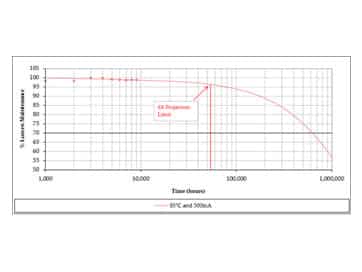In a previous blog post, we detailed LM-80 testing, how it relates to our LED devices, and how it provided the LED lighting industry with a unified testing methodology. Since LEDs and LED devices have longer lifetimes than many other lighting technologies the problem arose as to how long of a testing period would be needed. For example, the LM-80 minimum stated 6,000 hours (which is equivalent to approximately 8.2 months!). If a company wanted to publish 50,000 hour lifetime claims they would need to do the actual testing which would take about 68.5 months or approximately 5.7 years of constant testing!
It became evident that a standard methodology would also be needed to predict the usable lifetime. As a result, a committee was put together which included representation from both U.S. laboratories and major LED manufacturers. The resulting TM-21 technical memoratorim used the feedback of these groups to provide estimation guidelines for periods beyond the LM-80 test periods.
TM-21 states that for test periods of less than (or equal to) 10,000 hours the final 5,000 hours are used. For periods in excess of 10,000 hours the latter half of the collection periods is to be used. The final step is referred to as the 6X rule because it states you cannot publish projections beyond six times your LM-80 data collection period. Therefore, to reach the 50,000-hour target, manufacturers now only had to test at least 8,4000 hours (with many going beyond to 10,000+ hours).
